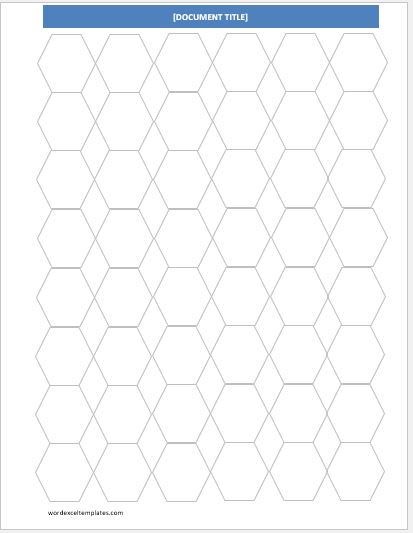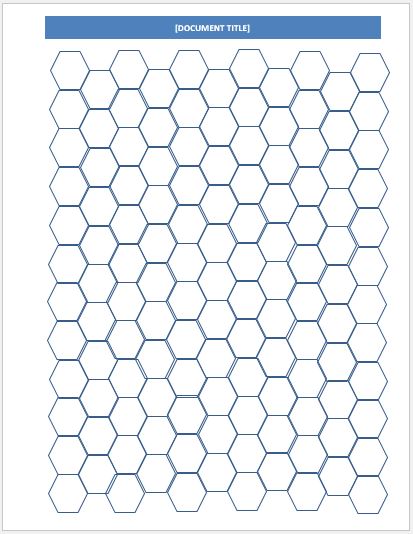Graph papers are regular paper with printed gridlines for plotting graphs, making diagrams, and other drawings. These papers are extensively used in the fields of engineering, arts, geography, and mathematics. While the most commonly used graph papers are squares, they also provide a lesser-known variant named hexagonal graph paper. Based on its type, hexagonal graph paper finds applications in numerous fields, which are discussed below.
Hexagonal graph paper, also known as hex paper, includes a series of hexagons arranged in a tandem pattern instead of the commonly used square or rectangular pattern. Each hexagon is composed of six sides, which are given six angles at 60°. The hexagonal graph paper resembles a honeycomb, and due to this change in appearance, hexagonal graph paper provides a wide range of practical and creative applications.
Hex paper is available in a variety of formats and scales; thus, the choice of scale depends on the reasons for its use. These can be found in notebooks as well as on loose paper, so they can be attached where they are needed. This versatile nature of hex paper makes it an essential tool in a variety of applications.
Hexagonal graph paper is considered a remarkable tool due to the following reasons:
- It provides symmetry in its hexagonal pattern, making it easier to deduce relationships.
- The printed pattern of hexagons in tandem fashion is aesthetically pleasing.
- For the study of circles and curves, hexagons are the preferred choice because they make it easier to draw accurate results as compared to square or rectangular patterns.
- It is a unique tool in scientific research and is used extensively.
Applications
Due to their symmetry and uniqueness, hex paper finds its application in the following disciplines:
- In geography and mathematics, hex papers are used to study trigonometric functions and geometric patterns with great precision and accuracy; therefore, these papers are considered highly valuable for mathematics enthusiasts and geologists.
- Drawing specific molecular structures of compounds and studying their functions have been made possible due to the specific shape and angle of hexagons.
- Chemistry employs the use of hex paper for visualizing molecular bonds and their structures to draw careful inferences.
- In the field of art and design, hex papers are used to draw intricate patterns and visualize unique designs due to the geometry of hexagons. These patterns can never be created on a square or rectangular grid.
- While dealing with circular data or curves in research, hexagonal graph paper is used for visualizing data, plotting data points, and drawing inferences from research findings.
- Following architecture, hex papers are an essential tool for drawing complex designs and patterns. These designs can never be justified with other patterns of graph paper.
- Hexagonal graph paper also finds its application in board games and puzzles because many games are designed around its unique structure which enhances the curiosity and fun during the game.
In conclusion, hex paper is not a variant or alternative of the commonly used Cartesian grid; rather, it has its own uniqueness and provides a different perspective on the equation altogether. Its work is precise and can be considered a cure for difficult geometric patterns, unconventional layouts, and much more. It breaks away the rigidity of squares and rectangles by preferring the results of organic and circular representation due to its distinctive grid.
Preview and Details of Templates

File: Word (.doc) 2003+ and iPad
Size: 312 KB

File: Word (.doc) 2003+ and iPad
Size: 312 KB
- Revenue Forecast Worksheet
- Inventory Budget Sheet Template
- Computer Shop Business Proposal Forms
- Budget Approval Form Template
- Payroll Budget Sheet Template
- Quarterly Tax Payment Tracker
- Payroll Tracker for Excel
- Delivery Route Optimization Worksheet
- Energy Consumption Monitoring Worksheet
- Return on Investment (ROI) Calculator
- Investment Portfolio Tracker
- Equipment Utilization Worksheet
- Emissions Monitoring Worksheet
- Monthly Utility Consumption Worksheet
- Sales Tax Calculation Sheet